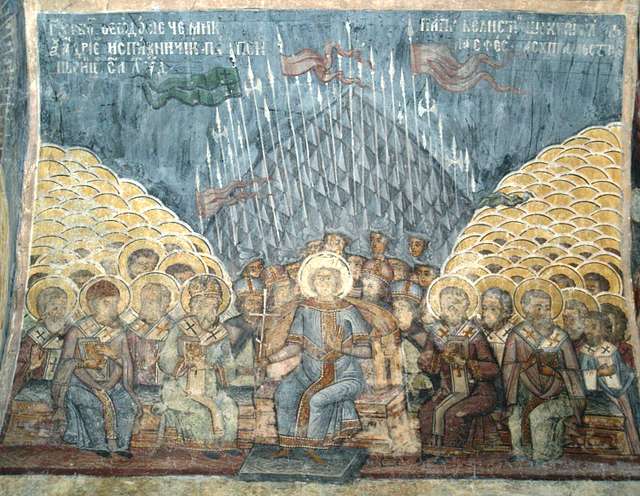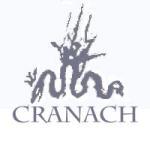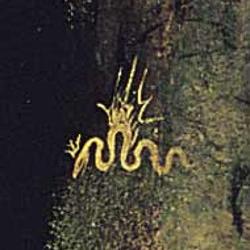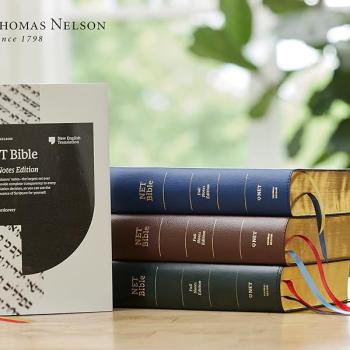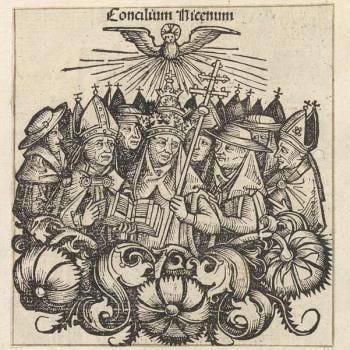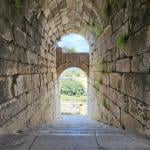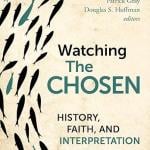Though we are celebrating the 1,700th anniversary of the Council of Nicaea, that gathering of bishops did not quite finish the Nicene Creed as we know and confess it.
Originally, the creed ratified by the Council of Nicaea ended with the words: “And in the Holy Spirit.” That’s it. The Council had much to say about “the Father almighty” and “Jesus Christ, the only-begotten Son of God,” but it did no more than mention the Holy Spirit.
Instead, the original Council tacked on was a brief list of teachings associated with Arius that were formally condemned:
But those who say: ‘There was a time when he was not;’ and ‘He was not before he was made;’ and ‘He was made out of nothing,’ or ‘He is of another substance’ or ‘essence,’ or ‘The Son of God is created,’ or ‘changeable,’ or ‘alterable’— they are condemned by the holy catholic and apostolic Church.
Certainly, in explaining what you believe, it’s also helpful to explain what you do not believe. Thus the Formula of Concord, in setting forth what we discussed yesterday as the “boundaries of orthodoxy” for Lutherans, gives both “AFFIRMATIVE THESES: The Pure Doctrine, Faith, and Confession” and “NEGATIVE THESES: Rejection of the False Opposite Dogmas.”
It may be that failing to give equal time to the Holy Spirit was simply due to the Council of Nicaea running out of time. But that hole in the creed needed to be filled. That became urgent when a new heresy arose, that of the Pneumatomachi, who denied the deity of the Holy Spirit.
So in 381 A.D. another council was called to address the deficiency regarding the Holy Spirit and, since the Arians were still flourishing, to flesh out the creed with additional phrasing. This was the First Council of Constantinople, which tweaked the Nicene Creed to make it mostly what we say today (with two exceptions that I’ll get into).
Here is the original wording, point by point, followed by the Constantinople revisions. (This is from Wikipedia, which is quoting from the English translations of Phillip Schaff, so the exact phrasing will not be what you are used to in church.) Square brackets show deletions; bolds show additions:
(1) Nicea:
We believe in one God, the Father Almighty, Maker of all things visible and invisible.
Constantinople:
We believe in one God, the Father Almighty, Maker of heaven and earth, and of all things visible and invisible.
(2) Nicea:
And in one Lord Jesus Christ, the Son of God, begotten of the Father [the only-begotten; that is, of the essence of the Father, God of God,] Light of Light, very God of very God, begotten, not made, consubstantial with the Father;
Constantinople:
And in one Lord Jesus Christ, the only-begotten Son of God, begotten of the Father before all worlds, Light of Light, very God of very God, begotten, not made, consubstantial with the Father;
(3) Nicea:
By whom all things were made [both in heaven and on earth];
Constantinople:
by whom all things were made;
(4) Nicea:
Who for us men, and for our salvation, came down and was incarnate and was made man;
Constantinople:
Who for us men, and for our salvation, came down from heaven, and was incarnate by the Holy Ghost and of the Virgin Mary, and was made man;
(5) Nicea:
He suffered, and the third day he rose again, ascended into heaven;
Constantinople:
He was crucified for us under Pontius Pilate, and suffered, and was buried, and the third day he rose again, according to the Scriptures, and ascended into heaven, and sitteth on the right hand of the Father;
(6) Nicaea:
And in the Holy Ghost.
Constantinople:
And in the Holy Ghost, the Lord and Giver of life, who proceedeth from the Father, who with the Father and the Son together is worshiped and glorified, who spoke by the prophets.
In one holy catholic and apostolic Church; we acknowledge one baptism for the remission of sins; we look for the resurrection of the dead, and the life of the world to come. Amen.
I think we can agree that these are notable improvements. In fact, as someone who has been in lots of committees trying to wordsmith a document, I would say this effort by hundreds of bishops must be one of the greatest wordsmithing efforts of all time!
But there were two further developments in the shaping of the Nicene Creed that were not devised by any council at all.
You will note that both versions here say “We believe,” not “I believe.” The original language of the creed, as of the Councils, was Greek. The Latin translation originally used the plural also, but soon the Latin translations switched to “I believe.”
The purpose of the Councils was to craft a collective statement for the entire church, what we all as Christians confess about God and what He has done for us. The Apostle’s Creed was used in Baptism, so that creed is an individual confession of faith, what “I believe.”
This distinction, though, was soon lost as both the Western, Latin-speaking church and the Eastern, Greek-speaking church began using the Nicene Creed for Baptism as well. Contrary to the Eastern Orthodox claim that they have never changed anything, even they now officially say “I believe.” (See this for the Roman switch, and this for the Orthodox rationale.)
Ancient sects such as the Armenians and the Oriental Orthodox still use the original “we.” Some Protestant church bodies have gone back to “we,” at least as an acceptable alternative, and even Roman Catholics have now approved that as an option.
Another difference is that Constantinople stated that the Holy Spirit “proceeds from the Father.” As opposed to “proceeds from the Father and the Son.” This is the famous filioque (Latin for “and the Son”) clause that the Western church presumed to add without consulting the Eastern church, which to this day confesses the original doctrine of the Holy Spirit’s procession from the Father alone. That led to the Great Schism of 1054 in which western Catholicism and eastern Orthodoxy went their separate ways. We discussed this in a post from last year, so I refer you there for a fuller treatment.
Does this seeming messiness of how the Nicene Creed came about bother you? It shouldn’t, as I’ll explain tomorrow.
Illustration: The First Council of Constantinople, wall painting at the church of Stavropoleos, Bucharest, Romania via Picryl, Public Domain


